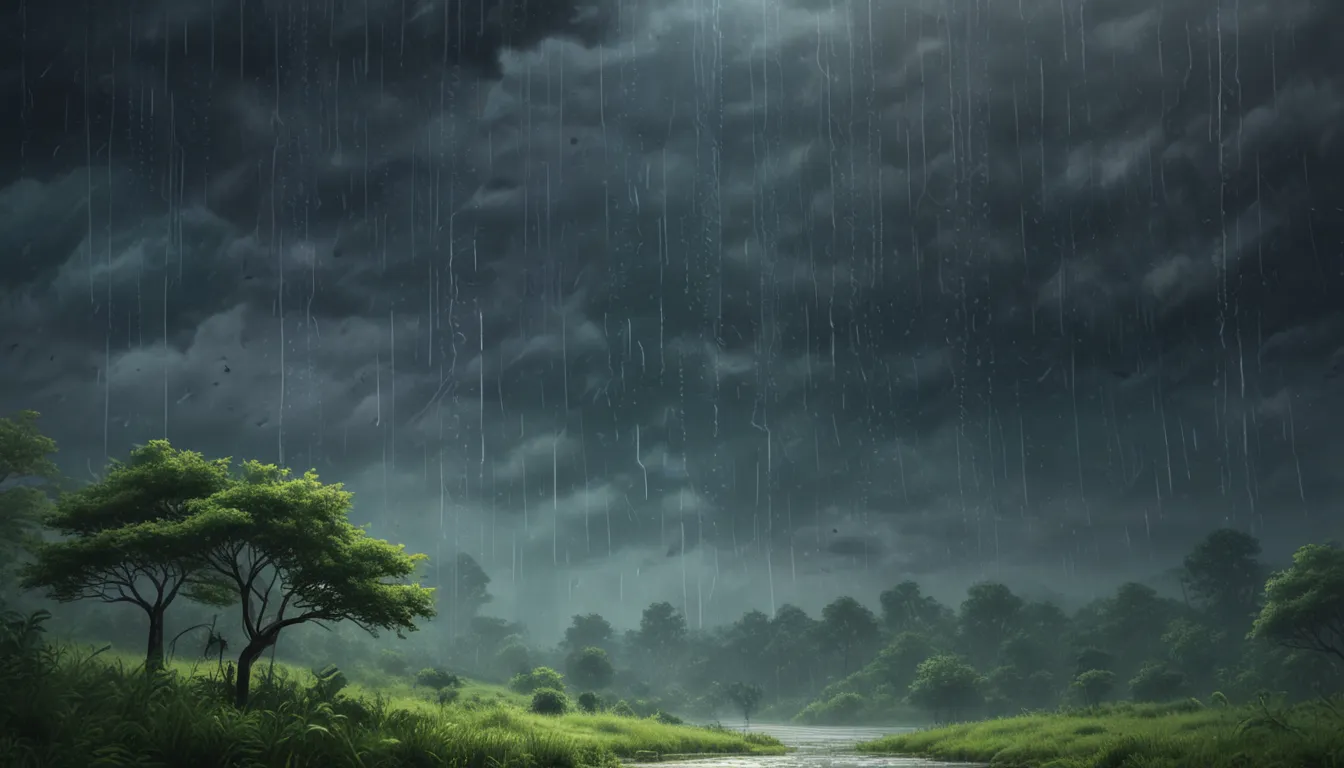A Note About Images: The images used in our articles are for illustration purposes only and may not exactly match the content. They are meant to engage readers, but the text should be relied upon for accurate information.
Rainfall is a natural wonder that sustains life on Earth, shaping ecosystems, climates, and human societies in incredible ways. From the wettest place in India to the driest desert in Chile, the diversity of rainfall patterns across the globe is truly awe-inspiring. In this article, we will delve into 16 unbelievable facts about rainfall patterns that will deepen your appreciation for the wonders of nature. So grab your umbrella and join us on a journey through the fascinating dynamics of precipitation!
Key Takeaways:
- Variety of Rainfall Patterns: Rainfall varies greatly worldwide, impacting agriculture, erosion, and ecosystems.
- Impact of Climate Change: Climate change influences rainfall patterns, leading to severe droughts and increased flooding.
- Artificial Rainfall Techniques: Scientists are exploring artificial rainfall methods to combat water scarcity.
The Wettest Place on Earth
Mawsynram, India holds the record for being the wettest place on earth, receiving an astounding average annual rainfall of 11,871 millimeters (467.4 inches). That’s more than 39 feet of rain!
Rain Shadow Effect
The rain shadow effect is a fascinating phenomenon where one side of a mountain range receives abundant rainfall while the other side experiences significantly less precipitation. This occurs due to the cooling and condensation of moist air as it rises over the mountain, resulting in rainfall on one side and a dry, shadowed area on the other.
The Driest Place on Earth
The Atacama Desert in Chile is known as the driest place on earth, receiving less than 0.04 inches (1 millimeter) of rainfall annually. Some weather stations in the region have even reported years without any rainfall.
Monsoons
Monsoons are seasonal winds that bring heavy rainfall, characterized by a shift in wind direction and weather patterns. The Indian Monsoon is renowned for impacting the Indian subcontinent with heavy rains from June to September.
The Rainiest Month
August is often the rainiest month in many parts of the world, with various factors such as sun position, ocean currents, and atmospheric conditions contributing to high levels of precipitation during this time.
Rainfall Disparity
Rainfall distribution varies widely globally, with some regions experiencing consistent rainfall while others face prolonged dry spells. This variability can significantly impact ecosystems, agriculture, and water resources.
Rain Gauges
Rain gauges are essential instruments for measuring rainfall, providing valuable data for meteorologists to monitor and predict rainfall patterns. These gauges range from simple containers to advanced electronic devices.
El Niño and La Niña
El Niño and La Niña are climate patterns that influence global rainfall patterns. El Niño is characterized by warming sea surface temperatures, altering atmospheric circulation and rainfall patterns. La Niña, on the other hand, involves colder sea surface temperatures and shifts in rainfall distribution.
Rainfall and Vegetation
Rainfall plays a critical role in determining the type and density of vegetation in a region, with high rainfall supporting lush forests and diverse plant life, while low rainfall may result in deserts or grasslands.
Rainfall and Agriculture
Adequate rainfall is vital for successful agriculture, as crops require sufficient water to thrive. Insufficient rainfall can lead to droughts and crop failures, while excessive rainfall may cause floods and crop damage.
Rainfall Variability
Rainfall patterns are influenced not only by long-term climate patterns but also by short-term variability driven by factors like atmospheric pressure, seasonal changes, and local topography.
The Rainiest Continent
South America is the rainiest continent on Earth, home to the Amazon rainforest sustained by heavy rainfall. The lush vegetation of the Amazon thrives due to consistent and substantial rainfall.
Artificial Rainfall
In some regions, scientists are experimenting with artificial rainfall techniques like cloud seeding to encourage rain formation. Substances like silver iodide or dry ice are introduced into clouds to stimulate the production of raindrops.
Rainfall and Erosion
Heavy rainfall can lead to erosion, particularly in areas with inadequate vegetation cover. The force of raindrops and subsequent runoff can erode soil, causing land degradation and sedimentation in water bodies.
Rainwater Harvesting
Rainwater harvesting involves collecting and storing rainwater for later use, offering an effective way to conserve water resources, especially in regions with unreliable rainfall. Methods include rooftop collection systems and storage tanks.
Climate Change and Rainfall Patterns
Climate change is impacting global rainfall patterns, leading to shifts in precipitation distribution, timing, and intensity. Some regions may experience more severe droughts, while others face increased rainfall and flood risks.
Conclusion
The study of rainfall patterns unveils many incredible facts about nature’s wonders. As we navigate changing climates, understanding and tracking rainfall patterns are crucial for sectors like agriculture, water management, and urban planning. By analyzing these patterns, scientists can predict and mitigate the impacts of extreme weather events.
FAQs
Q: Are rainfall patterns the same worldwide?
A: No, rainfall patterns vary due to factors like geography, winds, and ocean currents, resulting in diverse precipitation levels.
Q: Can rainfall patterns be accurately predicted?
A: While meteorologists use advanced models, predicting rainfall with complete certainty is challenging due to the complexity of weather systems.
Q: How does climate change affect rainfall patterns?
A: Climate change can alter precipitation levels, leading to droughts or floods that impact ecosystems, agriculture, and water availability.
Q: Can humans influence rainfall patterns?
A: Humans can indirectly affect rainfall through activities like deforestation or land alteration that disrupt natural moisture and temperature balance.
Q: How can erratic rainfall challenges be addressed?
A: Sustainable water management, efficient irrigation, and climate adaptation strategies are vital for mitigating unpredictable rainfall impacts.
Q: Are there regions with consistent rainfall patterns?
A: Some regions, like tropical rainforests, tend to have consistent high rainfall, but even these areas can experience variations due to natural fluctuations.
Explore the wonders of rainfall patterns with us as we unravel the mysteries of this essential natural phenomenon!






